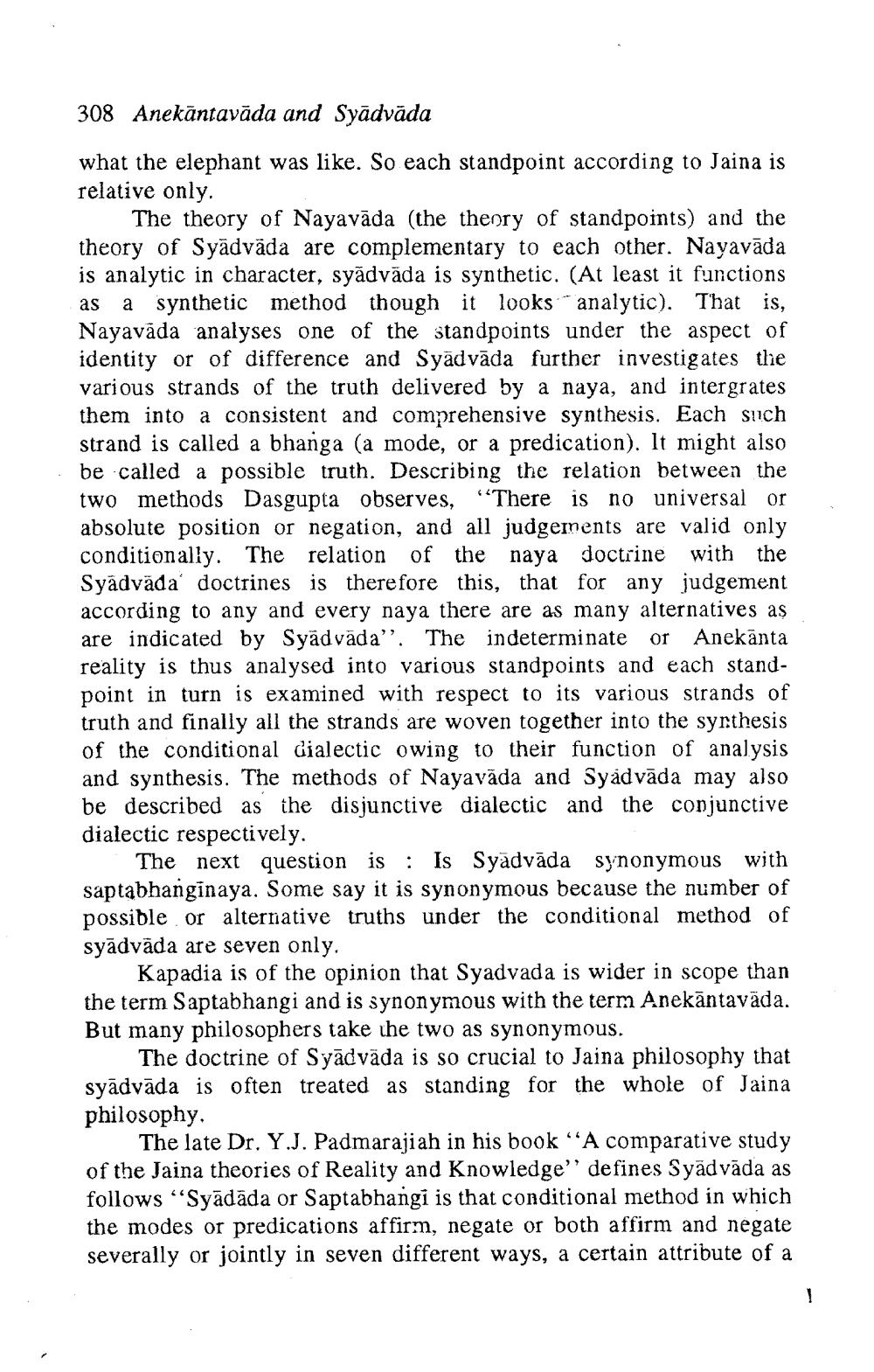________________
308 Anekāntavāda and Syādvāda
what the elephant was like. So each standpoint according to Jaina is relative only.
The theory of Nayavāda (the theory of standpoints) and the theory of Syādvāda are complementary to each other. Nayavāda is analytic in character, syādvāda is synthetic. (At least it functions as a synthetic method though it looks analytic). That is, Nayavāda analyses one of the standpoints under the aspect of identity or of difference and Syādvāda further investigates the various strands of the truth delivered by a naya, and intergrates them into a consistent and comprehensive synthesis. Each sich strand is called a bhanga (a mode, or a predication). It might also be called a possible truth. Describing the relation between the two methods Dasgupta observes, “There is no universal or absolute position or negation, and all judgements are valid only conditionally. The relation of the naya doctrine with the Syâdvāda doctrines is therefore this, that for any judgement according to any and every naya there are as many alternatives as are indicated by Syädvāda”. The indeterminate or Anekānta reality is thus analysed into various standpoints and each standpoint in turn is examined with respect to its various strands of truth and finally all the strands are woven together into the syrthesis of the conditional dialectic owing to their function of analysis and synthesis. The methods of Nayavāda and Syädvāda may also be described as the disjunctive dialectic and the conjunctive dialectic respectively.
The next question is : Is Syādvāda synonymous with saptabhanginaya. Some say it is synonymous because the number of possible or alternative truths under the conditional method of syādvāda are seven only.
Kapadia is of the opinion that Syadvada is wider in scope than the term Saptabhangi and is synonymous with the term Anekāntaväda. But many philosophers take the two as synonymous.
The doctrine of Syādväda is so crucial to Jaina philosophy that syādvāda is often treated as standing for the whole of Jaina philosophy.
The late Dr. Y.J. Padmarajiah in his book “A comparative study of the Jaina theories of Reality and Knowledge'' defines Syädvāda as follows “Syādāda or Saptabhangi is that conditional method in which the modes or predications affirm, negate or both affirm and negate severally or jointly in seven different ways, a certain attribute of a




